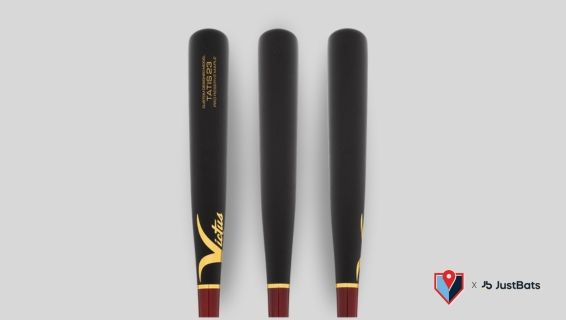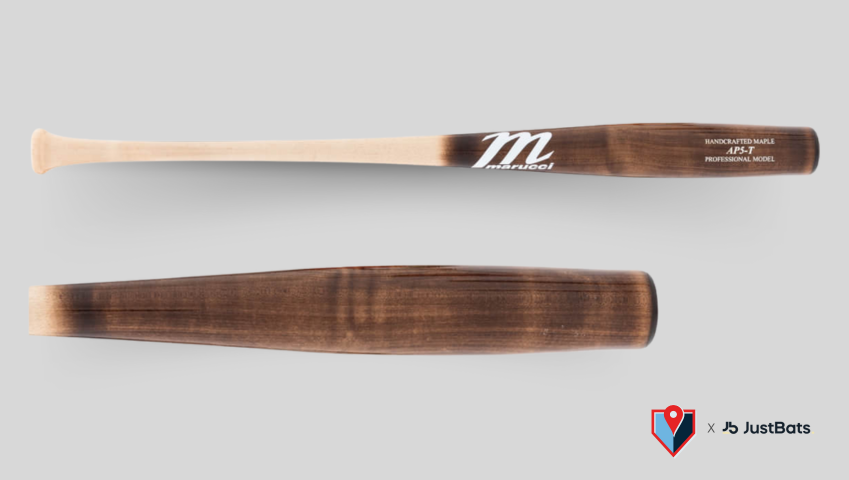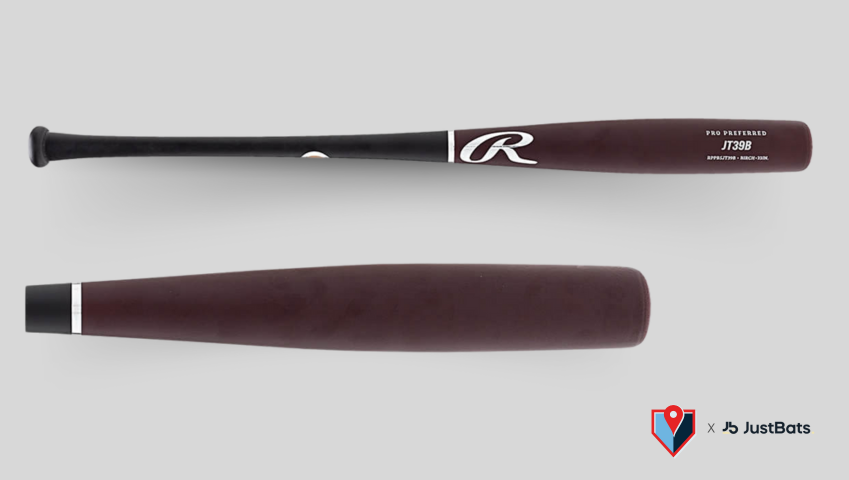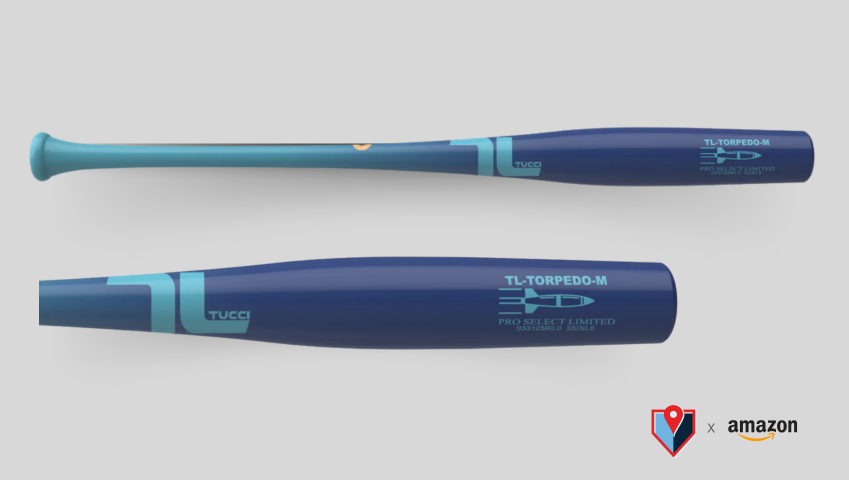Best Wood Baseball Bats: Reviewing Top Picks (2026 Edit)
Written by Zach Kerr
Updated November 5th, 2025
Most Durable Wood Bat
The Gold Label Baum Bats are the best on the market for three reasons: durability, size of sweet spot, and pop. $300 is steep for wood, but will outlast the other options 10:1 in use.

Baum Bat
Baum Bat Gold Stock Pro Flared Maple Wood Baseball Bat
$315
5
Specs
Best End Loaded Wood Bats

Old Hickory Bat Co
Old Hickory Bat Co. Mike Trout Maple Wood Baseball Bat
$220
4.5
Specs

Victus
Victus Pro Reserve TATIS23 Maple Wood Baseball Bat
$200
4.5
Specs
Best Balanced Wood Bats

Victus
Victus Pro Reserve ADOLIS53 Maple Wood Baseball Bat
$210
4.5
Specs

Sam Bat
Sam Bat Miguel Cabrera Maple Wood Baseball Bat
$150
4.5
Specs

Louisville Slugger
Louisville Slugger Pro Prime C271 Maple Wood Baseball Bat
$170
4.5
Specs
Torpedo Bats

Marucci
Marucci Pro AP5 Torpedo Maple Wood Baseball Bat
$169
5
Specs

Rawlings
Rawlings Pro Preferred JT39 Torpedo Birch Wood Baseball Bat
$179
4.5
Specs

Tucci
Tucci Torpedo Maple Wood Baseball Bat: Subzero
$209
5
Specs
Choosing A Wood Bat
Each type of wood offers different feels for each player. Understanding these differences can help you find the bat that best suits your swing style and personal preferences.
Types of Wood Bats
People often ask what the best wood bat material is. Truthfully, the best wood bat material is subjective. However, maple wood bats are by-and-large the most common type of wood bat used across all levels of baseball.
Maple
Maple is the go-to choice for many power hitters due to its dense, tight grain structure, which makes it extremely stiff and durable. This tight grain not only provides enhanced energy transfer, or "pop," but also reduces the likelihood of flaking, where layers of the wood begin to separate. Maple’s stiffness delivers powerful hits and is less likely to break compared to other wood types. For the best performance, look for Rock Maple (or Sugar Maple), which is considered the hardest and strongest type of maple available.
Ash
Ash bats are favored for their flexibility and lightweight feel, making them great for hitters who prioritize bat speed. Ash’s porous structure provides a unique “trampoline effect” on contact, which allows the ball to jump off the bat with more force. Additionally, ash bats typically have a larger sweet spot, making them an excellent choice for players transitioning from metal bats. Northern White Ash is the premium choice, known for its straight, visible grain that helps with durability and performance.
Birch
Birch bats offer a great blend of flexibility and strength, combining characteristics of both maple and ash. With its tight grain similar to maple, birch is strong but also flexible enough to absorb mishits better, making it more forgiving for players still learning to consistently find the sweet spot. Birch's ability to withstand impacts on the label or end of the bat makes it a durable choice, particularly for players adjusting to wood. Yellow Birch is the most common option when it comes to birch bats.
Bamboo
Bamboo bats are unique because they are constructed from compressed bamboo strips rather than a solid piece of wood. Known for their high density and extreme durability, bamboo bats are popular for both game play and training, especially in batting cages where frequent use can wear down other wood bats. Bamboo bats tend to be lighter and offer a nice energy transfer on contact. However, because they are not traditional wood, they must carry the BBCOR .50 certification for use in high school or college play.
Composite
Composite wood bats are engineered using multiple wood types or a blend of wood and synthetic materials. These bats are designed for maximum durability and often come with a warranty, making them a solid investment for players seeking long-lasting performance. However, because of the engineered structure, composite bats tend to be the most expensive. Despite the price, their durability and performance consistency make them a popular choice for players who need a reliable bat across many games and practices.
Other Factors
Bat Length
A bat that is too long adds unnecessary weight, making it harder to control. Conversely, a bat that is too short may prevent you from reaching outside pitches effectively. To determine the right bat length, stand the bat vertically against your leg. The bat should reach your mid-hip height. This provides a solid estimate of an ideal length for your body size and swing mechanics.
Bat Weight
- Balanced Bats: Balanced bats have even weight distribution from the handle to the barrel, offering better control and faster swing speeds. These bats are ideal for contact hitters who prioritize bat speed and control over pure power. Balanced bats allow you to adjust your swing more easily and maintain better timing, making them perfect for players who like to hit for average.
- End-Loaded Bats: End-loaded bats concentrate more weight towards the barrel, generating greater power and momentum during the swing. This weight distribution is ideal for power hitters who can handle a heavier bat and want to hit the ball with more force. While end-loaded bats provide the potential for harder hits, they require more strength and may slow down your swing speed slightly.
Knob Types
- Standard Knob: The most traditional style, the standard knob, flares out slightly at the end of the handle. It provides a secure grip, preventing the bat from slipping out of your hands during your swing. This style is favored by hitters who prioritize control and consistency in their swing.
- Flared Knob: The flared knob gradually tapers out from the handle to the end of the bat, offering a more ergonomic grip. This design puts less strain on your bottom hand, providing better comfort and control. Many players prefer the flared knob for its ability to reduce the risk of hand injuries or blisters during long games or batting sessions.
- Tapered Knob: The tapered knob features a smoother, more gradual taper, providing a comfortable grip with more hand mobility. Players who prefer not to feel the pronounced flare of a standard knob may find the tapered knob more comfortable and easier to control through the zone.
- :No Knob / Axe Handle A more modern design, the "axe" or no-knob handle, has an ergonomic shape that eliminates the sharp edge of the traditional knob. This design improves grip comfort, reduces tension on the wrists, and helps with swing mechanics by allowing smoother hand rotation through the zone. This style is growing in popularity among both amateur and professional players.
Wood Bats vs Metal Bats
Using a wood bat provides a more authentic and challenging experience compared to aluminum or composite bats. Wood bats have smaller sweet spots, forcing players to refine their swing mechanics and make more precise contact. This means players have to become better hitters to perform the same with wood. Additionally, wood bats offer better feedback, helping players immediately feel when they’ve hit the ball correctly or mishit it, making them great tools for player development.
Wood Bat FAQs
1. What is the best wood for a power hitter?
Maple end loaded bats are typically the top choice for power hitters due to its dense, stiff structure, which maximizes energy transfer and provides a powerful, solid feel on contact.
2. Can I use bamboo bats in games?
Yes, bamboo bats can be used in games, but they must carry a BBCOR .50 certification to be legal for high school and collegiate play.
3. How do I know if a bat is too heavy?
Try holding the bat out in front of you for 45 seconds. If you can maintain this without the barrel dipping, the weight is appropriate. If the bat drops, it may be too heavy for you.
Read next: Best BBCOR Bats
Join the club!
Sign up for our newsletter for more articles like this and features updates from our team!


Ready to get started?

